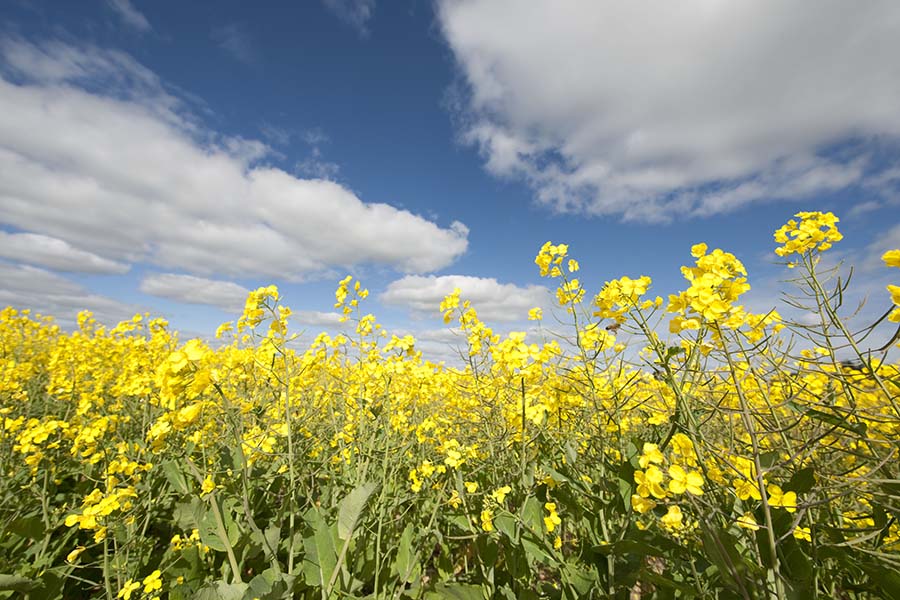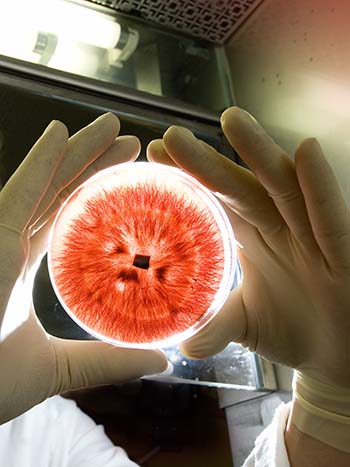Few inter-generational grain growers would not have witnessed or benefited first-hand from technical change and innovation on their family’s farm over the past 30 years.
What is sometimes less obvious is the critical role grains research, development and extension (RD&E) has played in driving this change and the strategy and rigor that underpins GRDC’s investment on behalf of grain growers.
The GRDC RD&E 2018-23 Plan will be succeeded by the new 2023-28 Plan this July. These major RD&E strategy documents are critical in guiding what GRDC invests in, why, and how success will be measured.
GRDC Managing Director Nigel Hart says the plans reflect GRDC’s core purpose, which is to invest in RD&E to create enduring profitability for Australian grain growers.
“A key part of looking forward is looking back at what we have achieved, the benefit and return on investment delivered through strategic and targeted RD&E during the last five-year plan,” he says.
GRDC sees transparent impact reporting as much more than a statutory requirement. It serves a fundamental need to communicate and inform grain growers and industry about how GRDC invests levy funds on their behalf.
The 2018-23 RD&E Plan was built around five core objectives:
- Improve yield and yield stability.
- Maintain and improve price.
- Optimise input costs.
- Reduce post-farm-gate costs.
- Manage risk to maximise profit and minimise losses.
Key Performance Indicators (KPIs) were developed as proxy measures of the impact of the 2018-23 RD&E investment portfolio. These KPIs were measured and monitored closely across the life of the plan and included an aspirational six per cent rate of return (RoR) for Australian grain farms by 2023.
Driven by higher yields and commodity prices, the national RoR for specialist cropping farms (excluding capital appreciation) came very close to this target with a 5.7 per cent increase in 2021/22, before falling back to 4.5 per cent for 2022/23. This compares to a five-year average of 4.3 per cent and the 10–year trend of 4.5 per cent.
The Plan also included separate indicators for each of the five strategic objectives as reported through the GRDC annual report. For example, the yield objective targeted a minimum one per cent per annum yield increase for cereals, two per cent per annum for pulses, and 1.5 per cent per annum for oilseeds.

Canola investments under the GRDC 2018-23 RD&E Plan have contributed to a resilient and rapidly expanding crop, with oilseed yields increasing by 7.72 per cent over the life of the plan. Photo: GRDC
Encouragingly, significant yield growth was recorded across all three crop groups nationally over the life of the plan. According to the latest ABARES data, national cereal and oilseed crop yields exceeded the 2023 targets set by 5.66 per cent and 13.40 per cent year-on-year (YoY) respectively. Despite the impact of drought during the plan period, pulse crop yields came in approximately 5% lower than the 2023 target.
A key driver of grower profitability, the ratio of input costs to crop revenue, was targeted to be maintained at or below 2018-23 forecast trends determined at the start of the Plan period, being 0.16 for fertilisers 0.16 for chemical inputs. These figures are currently 0.14 and 0.12 respectively.
Recognising the broader influences on input costs, commodity price and yield over the plan period – including conflict in the Ukraine and COVID impacts – the latest data shows that while chemical and fertiliser costs have increased on a per hectare basis over the plan period, the ratio of costs to total cash receipts has remained below life-of-plan targets.
Meanwhile, an international benchmarking study commissioned by GRDC and conducted by economic advisory firm ACIL Allen has found Australia’s total factor productivity (TFP) growth for averaged 2.75 per cent per year over the past 30 years of GRDC RD&E investments.
TFP compares input costs with earnings to provide an accurate measure of profitability and Australia’s growth was far ahead of other countries in the survey. The next-best TFP average annual growth rate was in Argentina, at 0.98 per cent.
“Although economies of scale and increasing farm size will improve TFP, the metric is mainly driven by enhanced farming practices such as more efficient input use, improved crop protection, higher yielding cultivars and better soil management,” Mr Hart says.
A huge diversity of GRDC-supported projects has contributed to these results or will help position growers and industry for the future. Investment was made against 29 key investment targets (KITs) and related strategic outcomes under the 2018-23 RD&E Plan. In all, the 2018-23 RD&E investments totalled over $880 million across more than 1,500 individual projects.
An example of how this program of investments has delivered benefit is the $115 million invested in 112 disease management projects during the life of the 2018-23 RD&E Plan. This included investment in the Australian Cereal Rust Control Program and the Australian Fungicide Resistance Extension Network, detection and control strategies for soilborne pathogens, and breeding programs to develop varietal resistance to major crop diseases; plus developing and delivering countless workshops, webinars, smartphone-based decision support tools and reference materials for growers.
Other key achievements across the life of the 2018-23RD&E Plan include:
- The establishment of Grains Australia to deliver industry good activities including grain classification, market access, and market information and education supporting the industry’s competitiveness and profitability.
- The establishment of GrainInnovate, the $50m agtech venture capital fund managed by Artesian Capital for the Australian grains industry.
- Comprehensive review and modernisation of several major crop breeding programs to deploy the latest genomic techniques, including partnership programs such as Chickpea Breeding Australia.
- Delivery of important research and extension projects including the National Variety Trials, Stored Grain Information Hub, Australian Herbicide Resistance Initiative, Herbicide Innovation Partnership, Centre for Crop and Disease Management, Grains Research Updates, Farm Business Updates and GroundCover magazine.
Mr Hart says every investment decision GRDC makes also considers how growers will capture the benefit or, where there is significant co-investment, how that benefit will be shared.
“We generally have more than 500 RD&E investments running at any one time, ranging in scope from multi-million-dollar national projects with partners like CSIRO and Meat and Livestock Australia, to small projects with farming systems groups to deliver against local needs,” he says.
As an example, investment supporting the development of blackleg-resistant canola cultivars, communicating varietal suitability based on regional conditions and blackleg risk, and producing decision-making tools and educating growers has had an enormous impact.
 GRDC will invest more than a billion dollars in grains RD&E under its new 2023-28 Plan, with a strong focus on intergenerational sustainability, yield growth and profitability. Photo: GRDC
GRDC will invest more than a billion dollars in grains RD&E under its new 2023-28 Plan, with a strong focus on intergenerational sustainability, yield growth and profitability. Photo: GRDC
Despite a five-fold increase in the area sown to canola nationally, growers have generally been able to keep on top of this disease. For individual growers, these GRDC-supported resources have delivered an estimated benefit of $68.75 per hectare per year.
In wheat, 84 per cent of the most commonly grown varieties in Australia now utilise rust-resistant genes or markers developed with GRDC investment, while 85 per cent of pulse varieties have been developed with some form of GRDC support.
Use of soil testing, yield mapping, lime application, in-season fertiliser, variable rate input technologies and stubble retention have all increased across Australian cropping, thanks to support from GRDC and broader industry.
Despite farming in one of the world’s driest, most variable climates, the water-use efficiency and yield of Australia’s major crops continues to improve.
Mr Hart says it is exciting to see the broad scope of change in farming practices over the past 30 years, and in particular how it can all come together when seasonal conditions are favourable, as demonstrated in the past couple of years.
“While recent seasons have delivered abnormally high yields, GRDC RD&E investments have supported grain growers to adopt and implement longer-term, transformational change and we are seeing the results across the sector.
“The grains industry is now the largest single sector of Australian agriculture, with the 2021/22 harvest exceeding $28 billion in value according to the latest ABARES data.”
Following these significant achievements and faced with evolving industry challenges, GRDC will release its RD&E Plan 2023-28 in July. The plan has been informed by extensive industry consultation and will drive how GRDC invests on behalf of growers to deliver genuine gains for the Australian grains industry.
Over the life of the plan, GRDC will invest more than a billion dollars in RD&E – representing just over half of all grains RD&E investment in Australia. Through these investments, GRDC will seek to:
- Harness existing potential by helping growers hit yield and profit targets across every paddock, every season.
- Reach new frontiers through step changes in the productivity of crops beyond what we thought possible.
- Grow markets and capture value by ensuring growers have access to a diversity of markets and get more for the crop.
- Thrive for future generations to ensure Australia’s grains industry remains a global leader in sustainability, for people, the planet and our long-term ability to farm.
Strategically, the plan looks ahead to the world of 2040, anticipating substantial changes in global crop mix and demand, the potential game-changing opportunities presented by new technologies, the need for action on climate, increasing seasonal variability and production risk, changing consumer and investor demands and more.
Mr Hart says GRDC must have a plan that is responsive to industry needs and priorities today, but with a strategic focus on the sector’s future.
“Understanding the scale, timeframe, crop type and region of benefit is critical in ensuring GRDC maintains the right mix of investments to deliver impact on-farm into the future,” he says.
“While some of our RD&E investments will deliver an immediate impact, others will not deliver until well beyond the current plan period.
“We are intergenerational investors and we understand that research is a long game.
“The time-lag between discovery and adoption needs to be recognised and this requires foresight in ensuring a portfolio of investments that delivers impact for the problems of today and tomorrow.”

























































